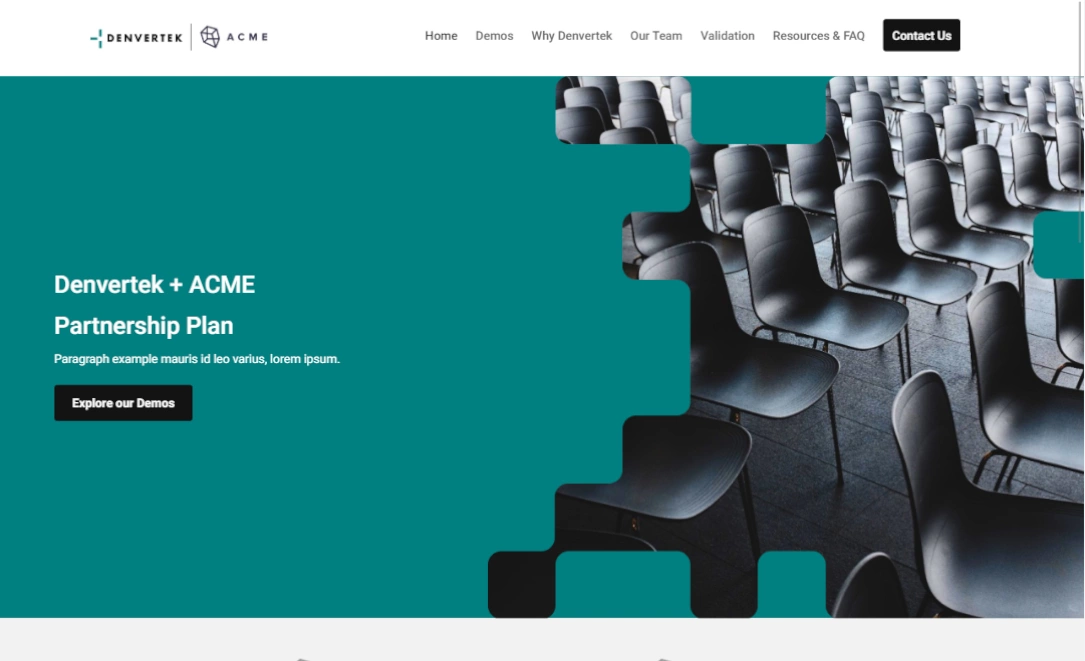After several meetings, business lunches, and calls, you may have finally heard the magic words from your client:
“Send over your business proposal.”
Just reading that fills you with joy, doesn’t it? It’s a huge win, and It signals that your client is one final step closer to doing business with you. But, before you start celebrating, you have to make sure your business proposal is accessible and spotless. This may seem like a nightmare if you’re used to long email chains where attachments go to die, but that isn’t the only way to approach your proposal!
Here’s how you can put together a digital business proposal that will get your clients to commit to partnering with you.
The necessary elements of a business proposal
What questions does a business proposal answer?
Your business proposal is far more granular than your sales proposal.
It’s the culmination of the negotiations, conversations, and propositions you and your client have had over the long period you’ve been speaking to each other. All of these details should be in your business proposal, which should answer your clients’ questions about key terms of your contract.
This might include answers to the following questions:
- What is the agreed-upon pricing plan?
- What is the set schedule for delivery or contracted services?
- How and where will products be delivered?
- What are the benchmarks or milestones you have agreed upon?
- Are there any additional terms or conditions related to branding or contracting outside services?
- What other terms and conditions have been agreed upon for special circumstances, like in cases of contract termination?
There should be no stone left unturned, as uncertainty can make it harder for a client to feel compelled to sign.
Entrepreneurial coach Stephen Gerard recommends including options in your proposal so that clients feel less pressured or cornered by one available choice. He describes this as adding pathways to say “yes.”
What documents must be included in a business proposal?
Your business proposal should be thorough, but it should avoid anything unnecessary. Because there is so much information packed in one spot, you want to ensure that your partners can get to the nitty gritty with ease.
Clearly labeled documents can help you, and there are a few that every business proposal will include.
- Executive summary
- Company introduction/cover letter
- Pricing models
- Timelines
- Contact information
- Case studies
- Formal agreement
You must have all these documents, but that doesn’t mean your business proposal needs to be standard. Let’s go through ideas for your next innovative proposal!
Business proposal ideas that shake up the process
Create a digital proposal
Business proposals are hefty documents. Traditional delivery methods like print and email just won’t cut it anymore—they’re inefficient and clunky. You can start your relationship off on the right note with an efficient, accessible, and navigable digital proposal in the form of a microsite.
It’s the perfect way to elevate a simple proposal into an information-rich resource your client can easily refer to. On a microsite, you can house all of the necessary information without it getting too cluttered, offering multiple options for them in a digestible format. Plus, they can easily refer back to it with just a link. By taking the time to create a microsite proposal, you’re showing yourself as thoughtful and professional, both great advantages to have in their decision-making process.
Highlight the problem and solution with the design
In this final push, don’t skimp on ironing out the details! You should pinpoint the core problems your clients are facing in detail. Try to include numbers and metrics whenever possible. The more you can demonstrate an understanding of your client’s unique needs, the better. After all, the only way to offer a sound solution is to understand a problem in its entirety.
A microsite will give you the most options for emphasizing the problem and solution. When it comes to numbers and metrics, it’s as easy as adding visuals like a graph or chart. Try placing a performance chart from before your services, next to a chart that has proposed metrics and benchmarks after partnering with you. It’s an impactful way to demonstrate your ability to address your clients’ problems.
You can also show a transition from problem to solution. You can house the problem and solution on one page so clients can scroll through your ideas for improvement. Or you could show them off on two separate subpages with buttons on your microsites homepage.
Tailor every page to your client
Designing each element of your proposal with your client in mind demonstrates initiative and forethought. It may seem like a small step, but it may not be one your competition has thought to take. Luckily, customizing your microsite is as easy as navigating a drag-and-drop design platform.
Adding personal touches and fine details to your microsite creates a visually compelling business proposal that moves clients to commit. A greeting to your client on the homepage is a welcome sight, and you can try incorporating your prospective partners’ branding and logos throughout the site.
Add a personalized video introduction
Your business proposal is about more than just the products or services you have to offer your partner, it is also the start of a lasting business relationship. Addressing the “non-business” parts of your proposal is just as important as getting into hard details.
Rather than opting for the traditional, text-heavy cover or introductory letter, include a personalized video introduction on the homepage of your microsite. Introduce account managers, key points of contact, and shots that allow your partner to get a glimpse of your company.
A video introduction is a great substitute for a cover letter. It’s the perfect way to include more information about who you and your business are without adding reading time to your proposal.
Devote a page to testimonials and case studies
The proof is in the pudding! Every good business proposal has testaments to success, whether through past client testimonials or cold hard data. Create a compelling argument for your potential clients with a subpage full of testimonials, social proof, and case studies.
While you can provide a lot of information on the main page of your microsite, you should devote a subpage to show off your qualifications. It shows your clients what your strategies look like in action for other businesses. While it may seem like extra weight in an already busy document, it shouldn’t be skipped.
Industry leaders know that case studies are highly effective ways to add credibility to your business. And, with microsites, you can share consumable case studies in your business proposal without detracting from other documents like your executive summary.
Fine-tune the case studies and testimonials you select to be highly relevant to your client and their circumstances. This will demonstrate not only that you have a deep awareness of the problem at hand, but also that your solutions work.
Create an interactive budget and schedule page
Your client will likely have questions or contingencies about pricing and scheduling information, so creating interactive elements that allow them to manipulate pricing models is a great solution. It saves you the hassle of addressing hesitation and offers your client peace of mind in the form of flexibility.
Try to include elements with these features:
- Mutable tables or spreadsheets
- Sliding scales
- Pricing calculators
- Adjustable calendars When all else fails, be sure to include a contact form at the bottom of your page for lingering questions.
Use analytics tools to track how they receive it
It would be a shame to see all of your hard work and effort go to waste because of a weak follow-up. Unfortunately, traditional business proposals leave it all up to guesswork.
Luckily, microsites offer robust analytics that get as granular as you want. Your team will receive notifications when the proposal is opened, have insight into which elements of your microsite are most engaged with, and you’ll be able to see where and with whom your microsite was shared. With this data at hand, you can clarify certain points in follow-up communications and improve your future proposal strategy.
Oh, not to mention, microsites have the added benefit of advanced security features that emailed PDFs don’t. With multi-factor authentication, SAML login, and organizational email access, you can avoid worrying about the security concerns that come with the simple push of a “forward” button.
Easily share a business proposal microsite using Zoomforth
Sharing your business proposal is easier than ever with a microsite. It makes it easy for your clients to navigate your business proposal and find the information they need so that there is no hesitation when it comes to that last signature. All they need is the link! Before you can, though, you’re going to need a microsite builder.
Ready to get your proposals closer to close? Elevate your enterprise communication strategies with Zoomforth. Zoomforth offers an intuitive platform for creating as many microsites as you want. There are branded templates and tons of modifiable elements you can add to them. Plus, they’ll be completely secure and mobile-friendly!
Sign up for a risk-free demo to see how we can help you make the most of your business proposal ideas!
Photo by Medienstürmer on Unsplash



